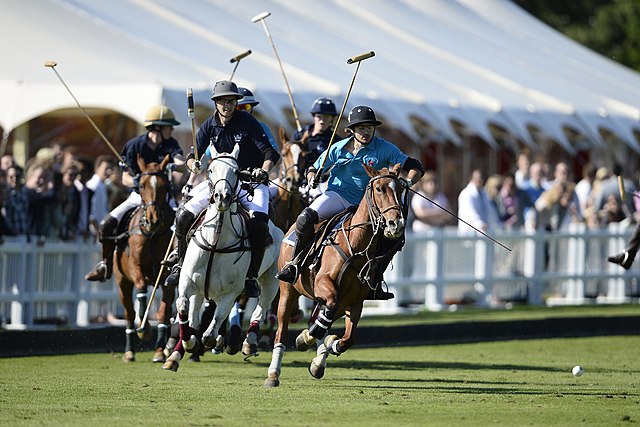Content deleted Content added
m |
m |
||
Line 12: This verse is inscribed on a stone tablet next to a polo ground in [[Gilgit]], north of [[Kashmir]], near the fabled silk route from China to the West. In one ancient sentence it epitomises the feelings of the players today. Polo is arguably one of the most complex of games in the world. The precise origin of polo is obscure and undocumented and there is ample evidence of the game's regal place in the history of [[Asia]]. No one knows where or when stick first met ball after the horse was domesticated by the ancient [[Iranian]] ([[Aryan]]) tribes of Central Asia before their migration to Iranian plateau; but it seems likely that as the use of light cavalry spread throughout Iranian plateau, Asia Minor, China and the Indian sub-continent so did this rugged game on horse back. However, many scholars believe that polo originated among the [[Iranian]] tribes sometime before the reign of [[Darius the Great]] ([[521 BC|521]]-[[485 [[Ferdowsi]], the most famous of Iran’s poet-historian, gives a number of accounts of royal polo tournaments in his [[9th century]] epic, [[Shahnameh]] (the Epic of Kings). Some believe that the Chinese (the Mongols) were the first to try their hands at the game, but in the earliest account, Ferdowsi romanticizes an international match between [[Turanian]] force and the followers of Syavoush, a legendary Persian prince from the earliest centuries of the Empire. The poet is eloquent in his praise of Siyâvash's skills on the polo field. Ferdowsi also tells of Emperor Sâpour-II of [[Sasanian]] dynasty of the [[4th Century Polo has became popular among other nations such as Chinese, as was the royal pastime for many centuries. Chinese most probably having learned the game from the Iranians nobilities who seek refuge in Chinese courts after the invasion of Iranian Empire by the [[Arabs]], or possibly by same Indian tribes who were taught by the Iranians. The polo stick appears on Chinese royal coats of arms and the game was part of the court life in the golden age of Chinese classical culture under [[Ming-Hung]], the Radiant Emperor, who as an enthusiastic patron of equestrian activities. Line 25: Some other facts about the game: * The oldest royal polo square is the [[16th century]] Maidan-Shah in [[Isfahan]], [[Iran]]. * The oldest Polo Club in the world still in existence is the Calcutta Polo Club ([[1862]]). * The 10th Hussars at Aldershot, Hants, introduced the game to England from India in [[1869]] ==External Links== | |||
 Article Images
Article Images